Petunia compares favorably with other flowers in its unpretentiousness, variety of colors and very extended flowering period.
|
Petunia blooms can begin in early spring and continue until late autumn. |
Timing for sowing petunia seedlings
The most impatient gardeners begin planting petunia seedlings at the end of January. But such a rush can only be justified for the southern regions.
To determine the timing of planting, you need to carry out simple calculations. Small-flowered petunia blooms 70 - 80 days after germination, large-flowered petunia 10 - 15 days later. This means that in order for the plants to bloom at the end of May, they must be planted at the end of February.
Preparing the soil for planting
It is advisable to have two types of soil.
- For germinating seeds.
- For growing seedlings after picking.
The soil for seed germination should be:
- Moisture-intensive.
- Breathable and lightweight.
- Poor, not nutritious.
Such an earthen mixture can be easily obtained by mixing any store-bought peat-based substrate with sand in a one-to-one ratio.
|
Why do you need non-nutrient soil? It's simple, poor soil stimulates the development of the root system. Trying to find nutrients, the roots begin to actively grow. |
But you can’t keep seedlings on a starvation diet for a long time. After picking, the plants should be planted in nutritious, organic-rich soil. Such land can consist of 2 parts forest soil, 2 parts humus and 1 part sand.
Before planting petunias as seedlings, all soil mixtures must be frozen in the open air for 2 - 3 weeks. It is highly undesirable to use soil from the garden to grow seedlings.
Selecting seeds and planting petunia seedlings
Petunia seeds are sold in shells (pellets) and without artificial shells. Seeds in granules are more expensive, but they are easier to work with. The granules are clearly visible on the ground and can be easily spread one seed at a time.
Seeds without shells are cheaper, but they are so small that they can only be sown. In addition, they are dark in color and are completely invisible on the ground.When planting, it may be unclear where there are already seeds and where there are not.
There are different ways to plant petunia seedlings.
1. Sowing seeds
|
Small petunia seeds are convenient to sow on white snow |
In this way, non-pelletized seeds are most often sown. The planting box or plastic container is filled with an earthen mixture of peat and sand. The soil is leveled and spilled with manganese solution.
It is quite difficult to sow seeds without shells. To somehow facilitate this process, proceed as follows:
- Mix petunia seeds with dry sand and use this mixture to “salt” the soil. This is convenient, but dry sand is not always at hand in the middle of winter.
- The soil in the planting box is covered with snow and the seeds are carefully scattered over the snow. Dark seeds are clearly visible against a white background, which makes the work much easier. However, snow in a warm room melts literally before our eyes, you need to work very quickly.
2. Planting petunia seeds in furrows
|
It is more convenient to plant seeds in granules in furrows. With this method of planting, you can extend the time the seedlings stay in the planting box. This may be necessary when there is a shortage of space, when there is nowhere to place the cups with plants after picking. |
As in the first case, the planting box is filled with earth and spilled with a solution of potassium permanganate. Using a ruler, grooves are made with a depth of 5 - 7 mm. and the seeds settle into these grooves (after 1.5 - 2 cm).
Petunia seedlings planted in the usual way quickly stretch out and if picking is late, the seedlings begin to fall. When planted in furrows, the seedlings also stretch out. To prevent them from falling, you need to move the soil towards the stems with your fingers on both sides.
|
It turns out to be a kind of bedding.After this addition, petunia seedlings can remain in the planting box for a long time. |
Video 1 Sowing petunia:
Video 2 Petunia a week after sowing:
3. Planting in peat tablets
If you are planting petunia seedlings for the first time, then planting in peat tablets will be the best option for you.
Peat tablets are an ideal medium for growing flower seedlings. They are made from pressed peat, enriched with essential microelements. In addition, they make caring for seedlings as easy as possible.
Before planting, the tablets are soaked in water, after which they become like barrels. For planting, it is better to use seeds in granules. They are simply laid out one at a time in each tablet, lightly pressed to the surface, without deepening or sprinkling.
|
Petunia seedlings in tablets. Young shoots appeared. |
Seedlings can grow in a tablet for quite a long time, and when it becomes crowded, simply remove the shell and place it in a pot of soil. There will be no injury to the roots; the seedling simply will not notice such a transplant.
|
Young seedlings grow quickly. |
After planting petunia seeds using any of the methods described above, they are lightly moistened with dewdrops and covered with film. For seed germination, the planting boxes are placed in a bright, warm (+22 - 24*C) place.
Petunia seeds germinate only in light. You cannot sprinkle the seeds with soil. Shoots appear in 4 - 7 days.
Seedling care
Backlight
|
When planting petunias in February, it is necessary to provide additional lighting to the seedlings. Without additional lighting, seedlings will grow thin and elongated. When planting in March, lighting is desirable, but no longer required. |
Video 3 Petunia lighting:
Due to lack of lighting, petunia seedlings become stretched and can become infected with blackleg.
Temperature
Petunia seeds should germinate at +22 - 24. After seed germination and before picking, the temperature must be maintained at +21 - 22*C.
After picking, the temperature is reduced to +18 - 20 degrees, and when the seedlings get stronger, to +16 - 18 degrees.
At elevated temperatures, seedlings grow pampered and weak.
Video 4 Picking petunia:
Picking
Seedlings begin to germinate three to four weeks after germination. By this time, the first pair of true leaves should appear. It is better to water the seedlings a day or two before picking, so that the ground is moist but there is no dirt.
|
Prepare the soil and fill the cups |
Petunia is planted in cups with a diameter of 8 - 10 cm. When transplanting, the plants are buried down to the cotyledons.
|
Picked seedlings |
After picking, the plants are watered abundantly and left in the shade for several days. After the seedlings are established, they are transferred to a bright, sunny place.
After picking petunias, you can breathe more freely - then everything will be much simpler.
How to water
It is necessary to water the seedlings especially carefully from the moment of germination until planting. Until the seeds have sprouted, they are moistened by spraying twice a day. After seed germination, no spraying! Only careful watering at the root. It is necessary to water so that water does not fall on the plants.
Water only with warm water, try to pour in a thin stream to places where there are no seedlings. The soil will still absorb water and become evenly moistened.
|
Water so that water does not get on the plants. All these precautions are needed to protect petunia seedlings from blackleg. Blackleg is a common and very dangerous disease. |
The development of this disease is promoted by:
- Lack of lighting.
- Reduced temperature
- Increased humidity.
After picking, the seedlings are watered abundantly, but not often. Before the next watering, the soil in the cups should dry out. From waterlogging, plants begin to lose color and turn yellow.
Top dressing
From germination to picking, no fertilizing is required. You can start feeding the seedlings 10 - 12 days after picking. It is more advisable to use soluble complex mineral fertilizers such as mortar, plantafol or aquarin. Petunia seedlings love a combination of root and foliar feeding.
If the petunia leaves begin to turn yellow, you need to treat the plants with iron chelate (on the leaf or at the root), in addition, you can water the seedlings with citric acid (a tablespoon per bucket of water, 1 g per 1 liter of water).
Feed petunia no more than once a week.
Petunia is planted in open ground at the end of May, beginning of June.
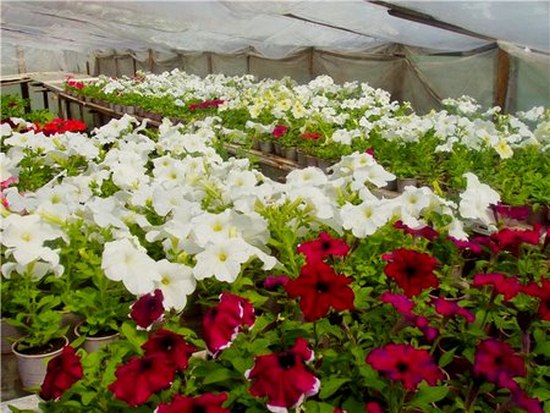
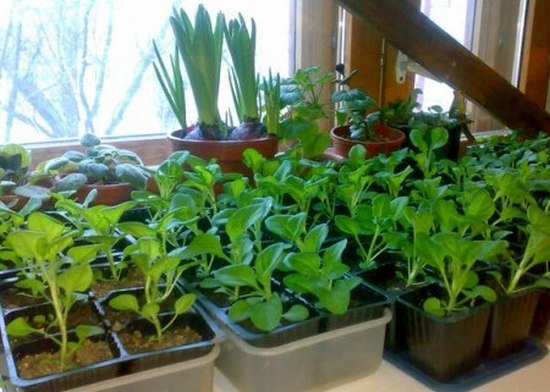
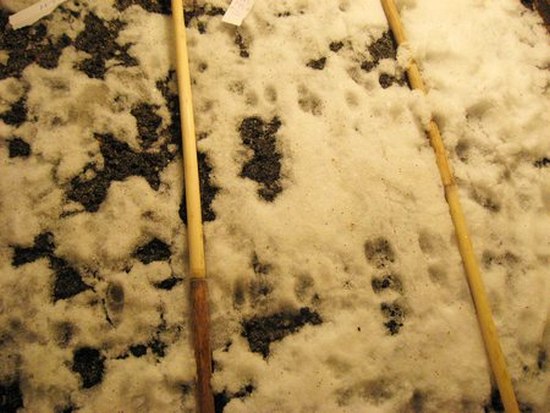
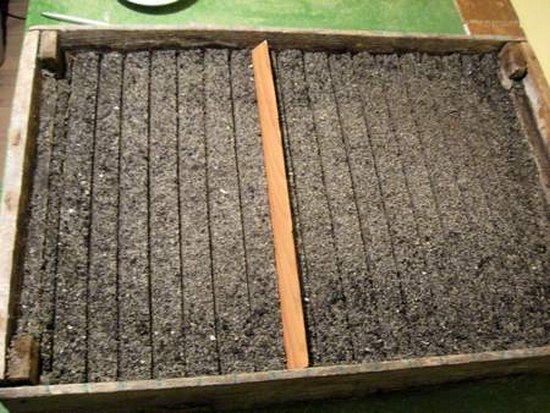
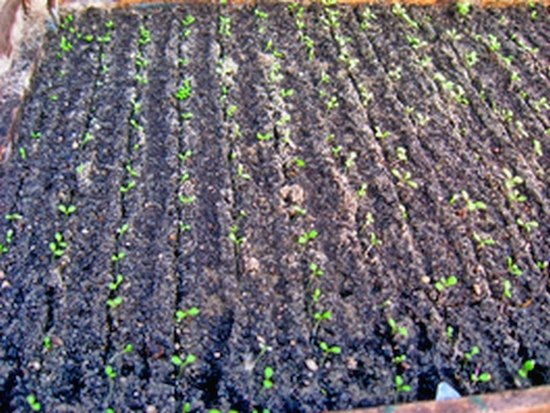
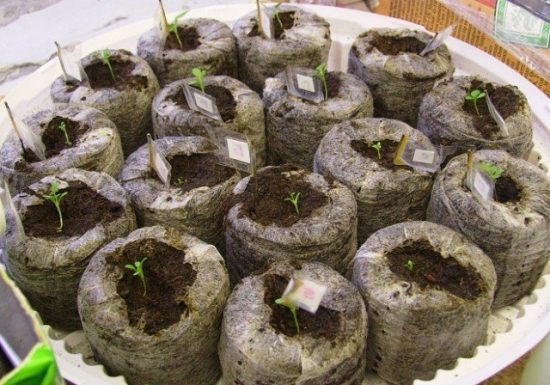
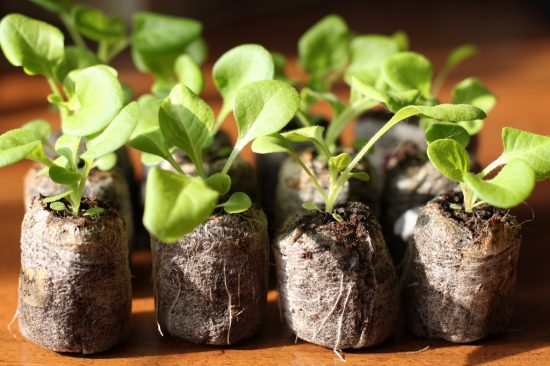
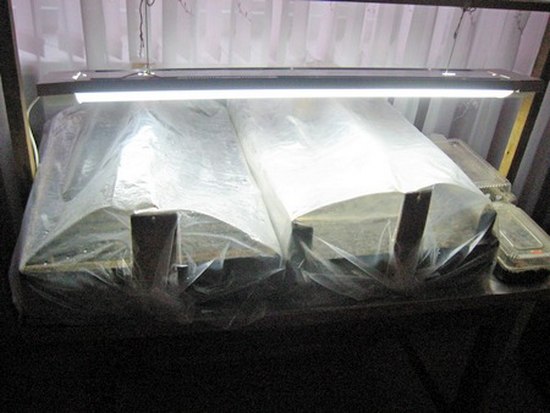
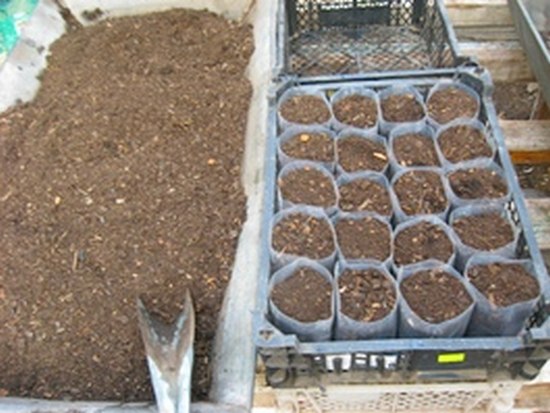
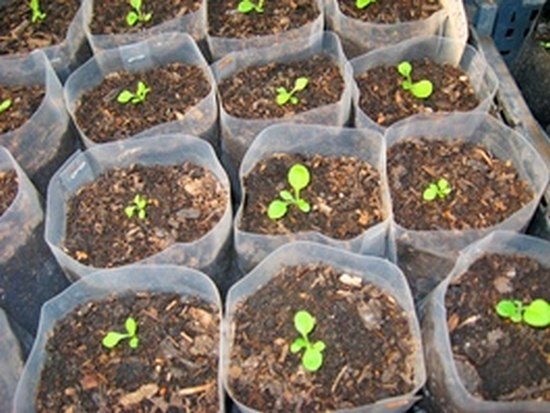
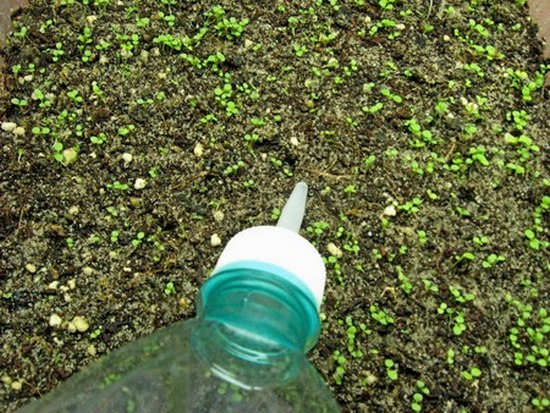

 (54 ratings, average: 4,63 out of 5)
(54 ratings, average: 4,63 out of 5) CUCUMBERS NEVER GET SICK, I'VE BEEN USING ONLY THIS FOR 40 YEARS! I SHARE A SECRET WITH YOU, CUCUMBERS ARE LIKE THE PICTURE!
CUCUMBERS NEVER GET SICK, I'VE BEEN USING ONLY THIS FOR 40 YEARS! I SHARE A SECRET WITH YOU, CUCUMBERS ARE LIKE THE PICTURE! You can dig a bucket of potatoes from each bush. Do you think these are fairy tales? Watch the video
You can dig a bucket of potatoes from each bush. Do you think these are fairy tales? Watch the video
 How our fellow gardeners work in Korea. There is a lot to learn and just fun to watch.
How our fellow gardeners work in Korea. There is a lot to learn and just fun to watch. Eye trainer. The author claims that with daily viewing, vision is restored. They don't charge money for views.
Eye trainer. The author claims that with daily viewing, vision is restored. They don't charge money for views. A 3-ingredient cake recipe in 30 minutes is better than Napoleon. Simple and very tasty.
A 3-ingredient cake recipe in 30 minutes is better than Napoleon. Simple and very tasty. Therapeutic exercises for cervical osteochondrosis. A complete set of exercises.
Therapeutic exercises for cervical osteochondrosis. A complete set of exercises. Which indoor plants match your zodiac sign?
Which indoor plants match your zodiac sign? What about them? Excursion to German dachas.
What about them? Excursion to German dachas.
I liked the way of planting petunias in the furrows. But this way you can plant not only seeds in granules, but also ordinary ones? Mix them with sand and scatter them along the grooves.
Lyudmila, the granules are easy to spread along the grooves at the same distance; this will not work with ordinary seeds in the sand. It will be dense in some places and empty in others, but in general, yes, of course, you can sow any seeds this way.
Good day!!! The calendar is wonderful, but March is not enough for everyone.
Elena, thank you for your feedback. It’s just not entirely clear what calendar you mean. If the Lunar calendar is for planting petunias, then March is there: http://grown-en.tomathouse.com/posadka-petunii-po-lunnomu-kalendaryu/
If you plant flowers according to the Lunar calendar in 2018, then March is there too: http://grown-en.tomathouse.com/lunnyj-kalendar-cvetov/
Maybe you were mistaken and did not mean March, but May? Then write and I promise that I will add May calendars there especially for you.
Tell us how to properly pinch petunia seedlings?
Irina, we pinch our petunia when the seedlings grow 6-8 pairs of leaves. You should not pinch the very top of the head, but along with the top pair of leaves. Then shoots appear from all internodes. Although there are such stubborn specimens that throw out only one shoot growing upward. These have to be pinched several times.
If the bush grows in the ground, then one pinch is enough, but if in a pot, then it is better to pinch the side shoots when they reach a length of 15-20 cm.
Thanks for the information, very useful article!
I am very glad, Sergey, that the article was useful to you.
Thank you very much for the article. I really wanted to know about watering seeds. And here, about almost the entire process of growing seedlings.